Patrick Mahomes Week 1 film review: Methodology and a frustrating first outing
We're back to charting every single dropback by the Chiefs star QB. Let's talk about how this process works, and about a game that had some ups and downs.
This article is unlocked for everyone to provide a glimpse of how we’ll be breaking down Patrick Mahomes’ snaps this year. If you like this sort of analysis beyond the box score, you can subscribe for $12 a year by clicking this link.
All right, NOW it feels like the season has officially begun. Because we are back to charting Patrick Mahomes’ snaps.
I’ve done this so many times for so many years that it’s tough to know where to begin for those who haven’t been along for the ride since the Alex Smith days. But I’ll do my best to explain what is arguably my favorite part of this job; Trying to accurately quantify how well a quarterback plays the game.
It’s very tough to say how well a quarterback performed in a given game based on the numbers. That’s an absolute fact. Even the best statistical tools we have (such as expected points added, completion percentage over expected, QBR, etc.) are all hindered by the same flaw as more basic stats in that they measure the result rather than what the quarterback specifically did on a given play.
You know the drill… a 2-yard screen pass can result in 75 yards and a touchdown while a gorgeous 15-yard out from the opposite hash can result in an incomplete pass if the receiver doesn’t do his job (or, you know, a perfectly on-target throw can turn into a pick-six due to a drop). In short, the statistics, even the best ones, tell us the “what,” not the “how.” And the “how,” as well as eliminating other factors involved in the play, is necessary to evaluate the quarterback.
TLDR; How do we separate the quarterback completing an easy 5-yard throw that gets a ton of YAC from, say, throws like this one?
PHEW. This is an almost impossibly good throw threading the needle between two safeties while putting enough heat on it to arrive on time AND putting enough loft on it to get over the underneath defender. On the stats sheet, though, it shows up the same as a dumpoff to a crosser that is wide open. It’s always driven me nuts that statistics don’t give us a way to differentiate from these things.
So for those who haven’t been reading here or at The Athletic (or SB Nation before that), I set out years ago to try and find a way to quantify what really matters from a quarterback’s play: Accuracy, pocket presence, vision/awareness, playmaking, and ball protection. If a quarterback does these things well, he’ll consistently play well.
With that in mind, when I watch a quarterback’s all-22 film I review each snap and chart the following:
Plays/yards created- This is a way to quantify how often the QB is making things happen when things break down on offense due to pressure, no one getting open, etc. It’s a way to really see how often a QB is “carrying” the offense. It’s rarer than people realize, and Mahomes is (unsurprisingly) basically in a class by himself.
Franchise QB throws- you know them when you see them (see above). How often is the QB making those 15-yard outs to the opposite hash, or driving the ball into a tight spot, etc? Much like plays/yards created, it demonstrates how often a QB is making tough plays vs taking advantage of others making plays or the structure of the offense winning.
Multiple-read plays- How often is the quarterback scanning the field? How often is his first read open? What does he do in games where he has to go to his second and third read over and over?
Accurate/inaccurate throws from both in and out of the pocket- Completion percentage doesn’t tell us whether the throw was good, because the receiver could well have bailed out the QB on a bad throw OR could have dropped an incredible one. Hence, accuracy charting tells us much more about the QB separate from the offense and/or receiver.
Flushes (plays the quarterback is forced to bail out due to pressure before anyone is open)- Is the OL keeping the QB clean constantly, or is he running for his life? Knowing that helps unlock what the QB is doing on his own.
Drops by receivers and yards cost- This is a pretty obvious one.
Potential interceptions- Because a bad throw is still a bad throw even if the defender drops it. These are reserved for plays a defender should have picked it off. This also helps us weed out interceptions that aren’t on the QB, like a dropped pass that tips into the air.
Missed shots- A receiver who was open and should have likely been seen, but wasn’t. It’s crucial to try and view this within the framework of the reads as best as we can tell, and it’s another thing stats miss in terms of opportunity cost.
Happy feet- When a quarterback bails on clean pocket or creates pressure with his movement. This helps us separate OL issues from QB issues
Utilizing this methodology has allowed me to do the best job I can in determining how well a quarterback played in a given game (or season) in a way that is much more accurate than statistical analysis. A terrific example of this can be found in 2021, when the Chiefs played the Packers and errors elsewhere torpedoed the offense while Mahomes himself played quite well. However, it also can tell us if things are the other way around and a good offense is covering a QB’s lack of ability. It can also help us zero in on blame if a QB just played poorly, such as Mahomes against the Titans in 2021 (the worst full game he’s ever played).
I’ve utilized this method to contextualize Mahomes by looking at Josh Allen’s divisional round performance, as well as multiple games from other elite quarterbacks. Here are Mahomes’ averaged numbers from the 2022 season (there’s a full article here that talks about how 2022 was the best he’s ever been), as well as from 2021 (the full-season breakdown for that year can be found here) and from 2018 (a year I reference since it was his most dominant in terms of basic stats by some measures).
2022
2021
2018
(NOTE- I stopped charting depth of target a couple of years ago, now that Next Gen Stats makes that information publicly available. It’s a marvelous tool!)
To sum up, the goal here is to answer the question of “how did the quarterback play” over the course of a single game, multiple games, or an entire season, and to do it in a way that separates his play as much as possible from play design and his surrounding talent. It’s also an effort to quantify what we’re looking at on film in a way that allows us to compare one performance to another.
Is it perfect? No. But it is, in my opinion, the most in-depth way I can do this job. And it allows us to answer with much more certainty what is (and isn’t) happening on the field.
With that in mind, let’s dive into our first Mahomes film room of the season against Detroit. Here are the Week 1 charted numbers.
The Lions game, as we’ve discussed at length, contained some frustrating moments from the receiver group, and not just the the horrendous drops (6 drops for 48 yards lost doesn’t necessarily sum up the damage when so many were on crucial downs OR, of course, led to a pick-six). There were some miscommunications and problems that existed outside those issues as well, though I think all are correctable.
But Mahomes, by my charting, wasn’t totally blameless either. He was very good, yes. He’s basically always very good. But he wasn’t quite up to his usual lofty standards in a few categories. Let’s talk about what he did well and then a couple of mental errors on his part that did prove costly.
First, it’s worth noting that for all the talk about pass protection, overall the offensive line did a solid job. Seven flushes is not a bad number against a decent pass rush (though they don’t want that number to climb into the double digits against better teams, so it bears watching), and Mahomes did have the opportunity to sit and survey on multiple pass attempts.
Another thing I noted is that overall, Mahomes was throwing the ball with accuracy and placement on a tough night. And this is as good a time as any to talk about placement vs accuracy. This throw became the subject of some debate online, which I found interesting.
While the entire world acknowledged that Kadarius Toney should have caught this pass, a surprising (to me) number of people pointed to Mahomes as an additional culprit, saying that he threw the ball behind him. And this is a chance to talk about what placement means and how it relates to accuracy. Because on the surface, yes, Mahomes’ throw “forced” Toney to reach behind him. However, this is a situation where one has to look at the context of the throw and consider throwing lanes and zone coverage. And one has to also think about how defenders in the NFL “flow” based on where the quarterback is looking and where he throws the ball.
Let’s take a look at back to back screenshots here, first as Mahomes is just about to start his throwing motion, then as the ball arrives to Toney.
There’s a reason why Toney starts to slow his route even as Mahomes is winding up. And that’s because he knows that the throw is not going to go out in front of him based on the zone look the Lions re throwing. Instead, Mahomes is going to place it in the lane between 46 and 34, both of whom are playing with their eyes on the QB and looking to attack whatever lane Mahomes decides to throw the ball. That’s how zone coverage works; It plays the quarterback more than the receivers, flowing to where the routes are and taking away passing lanes.
Good quarterbacks understand where those lanes are and throw to the spot. That’s what throwing with anticipation is. They trust their receivers to recognize that spot and “sit down” in the throwing lane. It’s what makes Travis Kelce one of the most dangerous weapons in football; He understands where to sit down and wait for the ball better than perhaps anyone in the league.
If you’ve read this far, you clearly like going beyond the box score. If you haven’t, consider hitting this here button and subscribing for $12 a year forever.
Because the Lions (even the defender on MVS, who can see much more clearly at the end of the play is still playing the QB even as he sticks with the deeper route) are playing zone here, putting the ball out in front of Toney is a dangerous proposition. As Mahomes is winding up, 34 is looking to grab depth and jump a hard-thrown pass. However, lofting it over him creates the danger that it will lead Toney right into the boundary defender, who would have time to recover in theory (these guys are freaks). That’s why the throw is to the open lane, and Toney knows it (hence, the slowing down.
This is an example of how a well-placed ball might not always look like a perfect throw in terms of hitting a receiver in-stride. Because of the way defenses flow to the ball, the throw is often with anticipation into a lane OR placed away from defenders more so than placed out in front of a receiver’s momentum. Toney should have slowed a bit more here (you can see the ball is basically RIGHT in the middle of the throwing lane) and been ready for it, though it’s a pretty simple catch regardless.
Anyways, returning to Mahomes’ overall game. Throughout the evening, he was overall putting the ball on-target and making the necessary adjustments to the Lions’ zone looks. He was (as we already knew) betrayed by some absolutely crucial drops, and he created yards on multiple plays, including a fun pitch and catch to Rashee Rice that had many (including me) begging to see Rice get more looks than he did in the second half of the game.
Overall, Mahomes’ performance was an average one for him (which, of course, would be an excellent day for most QB’s), with some franchise throws mixed in with creating yards and an overall accurate day. However, he did have a few more missed shots than normal, and from what I could tell there were some trust/comfort issues adjusting to his new receives and tackles.
There were a few snaps where Mahomes’ process looked more sped-up than it needed to be, as well as as (on some of the same snaps and one other) where it looked like he was hesitant to pull the trigger for a receiver who could have made a play. Only three total charted as pure “missed shots,” but there were a couple of other borderline plays. And arguably his worst play of the evening came on a 3rd and 4 that ended a drive.
Here, Mahomes had multiple places he could go with the ball on 3rd and short when he hit the top of his drop, from Moore (middle of the field), Gray (underneath right past the sticks on the right side), to even MVS deep (going across the field to the right sideline with plenty of separation). He even starts his throw process to Moore, but clutches the ball instead and doesn’t seem to trust his eyes (Diante Lee, an excellent analyst for The Athletic, noted that Detroit’s rotation here was so bad that it probably made Mahomes hesitate as to what he was seeing).
That hesitation by Mahomes results in pressure eventually getting through (hey, look, a good example of pressure that isn’t on the OL!) and he has to start scrambling. Even after that, though, he has an open Moore to deliver the ball to (Moore keeps moving to try and stay in Mahomes’ line of sight). However, his throw is a bit off and Moore can’t bring it in. It’s a tough play that results in a punt where there were easy options for a first down and a potential option for a huge TD to MVS.
As you can see from Mahomes’ previous seasons (especially last year), he very rarely misses open receivers within the framework of the play. Having three of those plays Thursday, in addition to the struggles his receivers were having catching the ball or adjusting correctly to zones (Toney and Blake Bell both had plays that could have been completions had they sat down or moved towards daylight), led to the offense stalling a few times where it normally would not.
Seeing Mahomes Thursday actually reminded me of early in the 2021 season, when he was adjusting to an entirely new offensive line. He looked good, but not demigod good, and you could see he’s learning to trust these tackles and receivers. Again, it was a fine performance, but one that I’d say carried a couple more mistakes than he normally makes. It’ll be interesting to see how that trust grows in future games and how he adapts moving forward.
And one thing you can know is that I’ll be here charting every snap of the way.




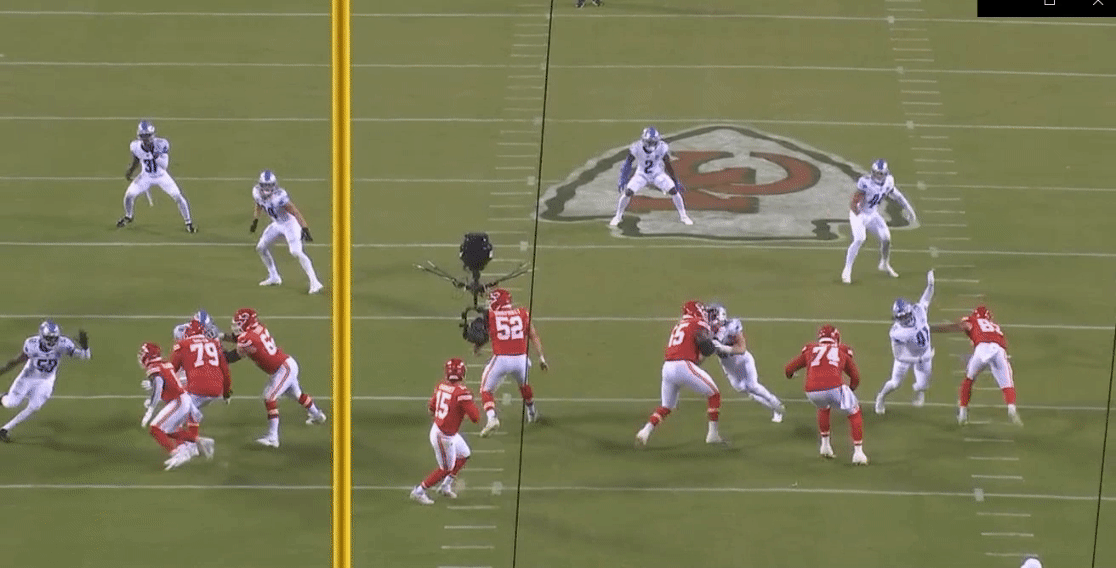




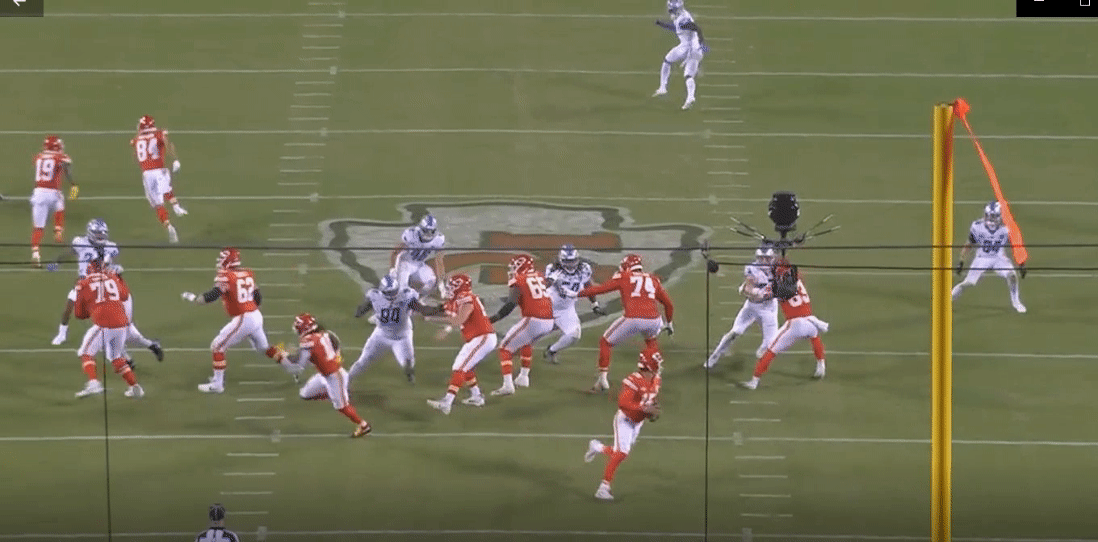
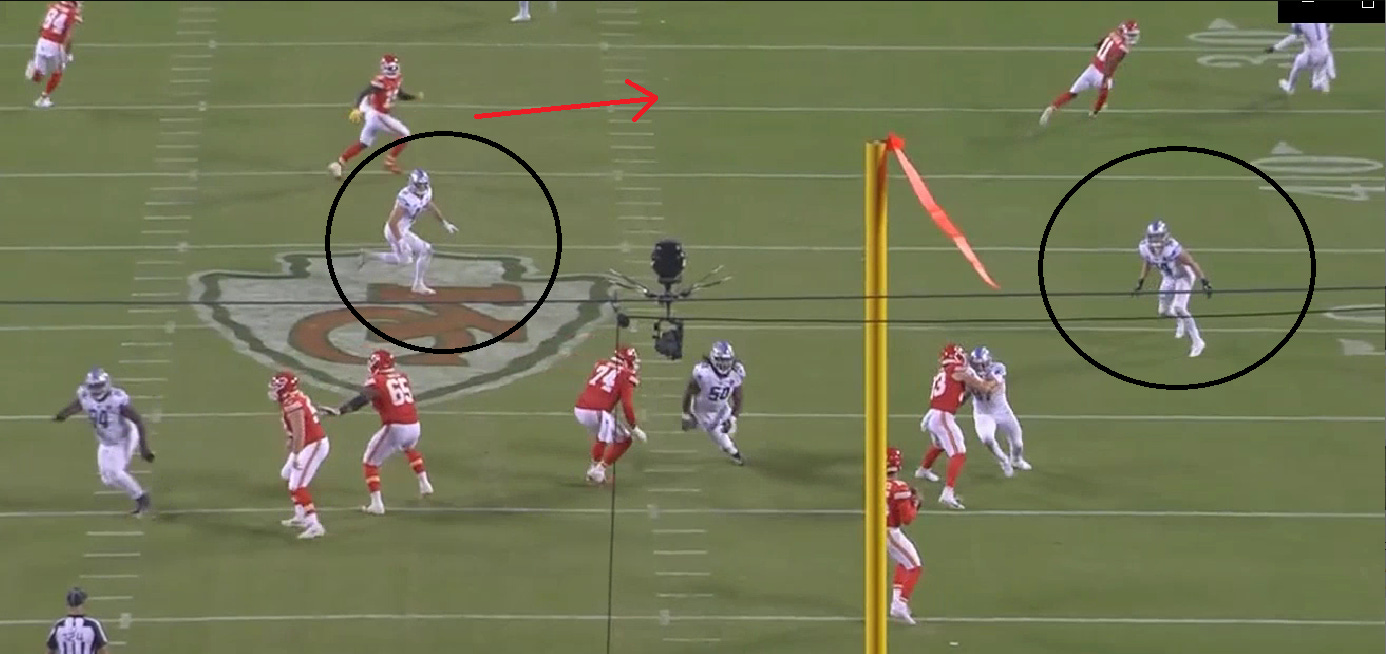
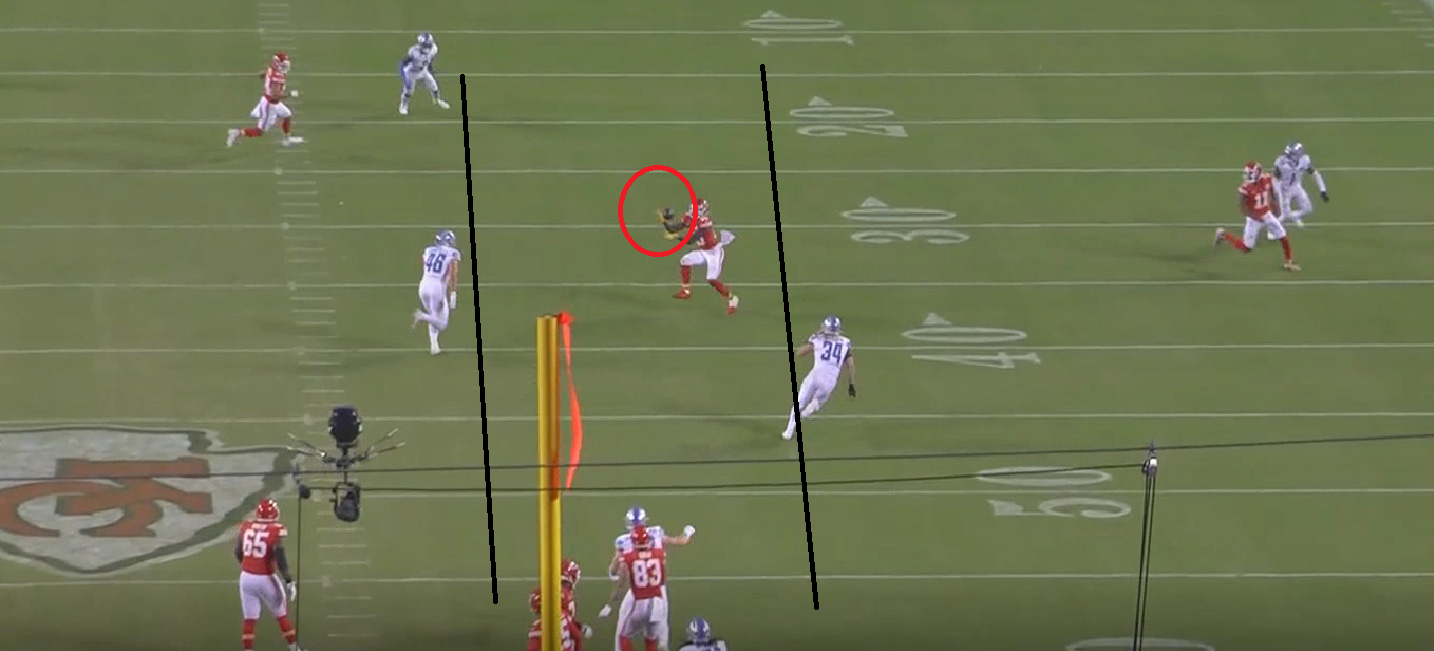
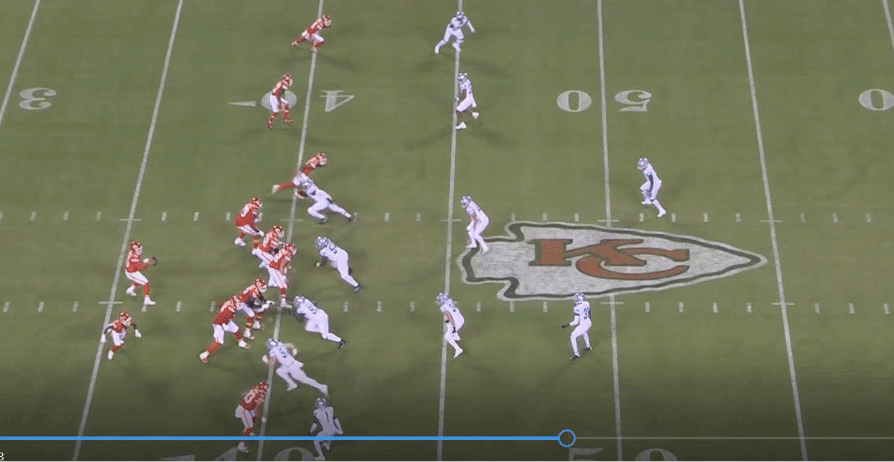
I appreciate the distinction of accuracy vs. placement as it relates to zone coverage. I would have just labeled it a bad pass without knowing all the different factors that go into a throw like that.
Excellent analysis as usual. Just chalk this game up to a fluke game. Weirdly, with all the drops and misses we still should have beat a pretty good football team.